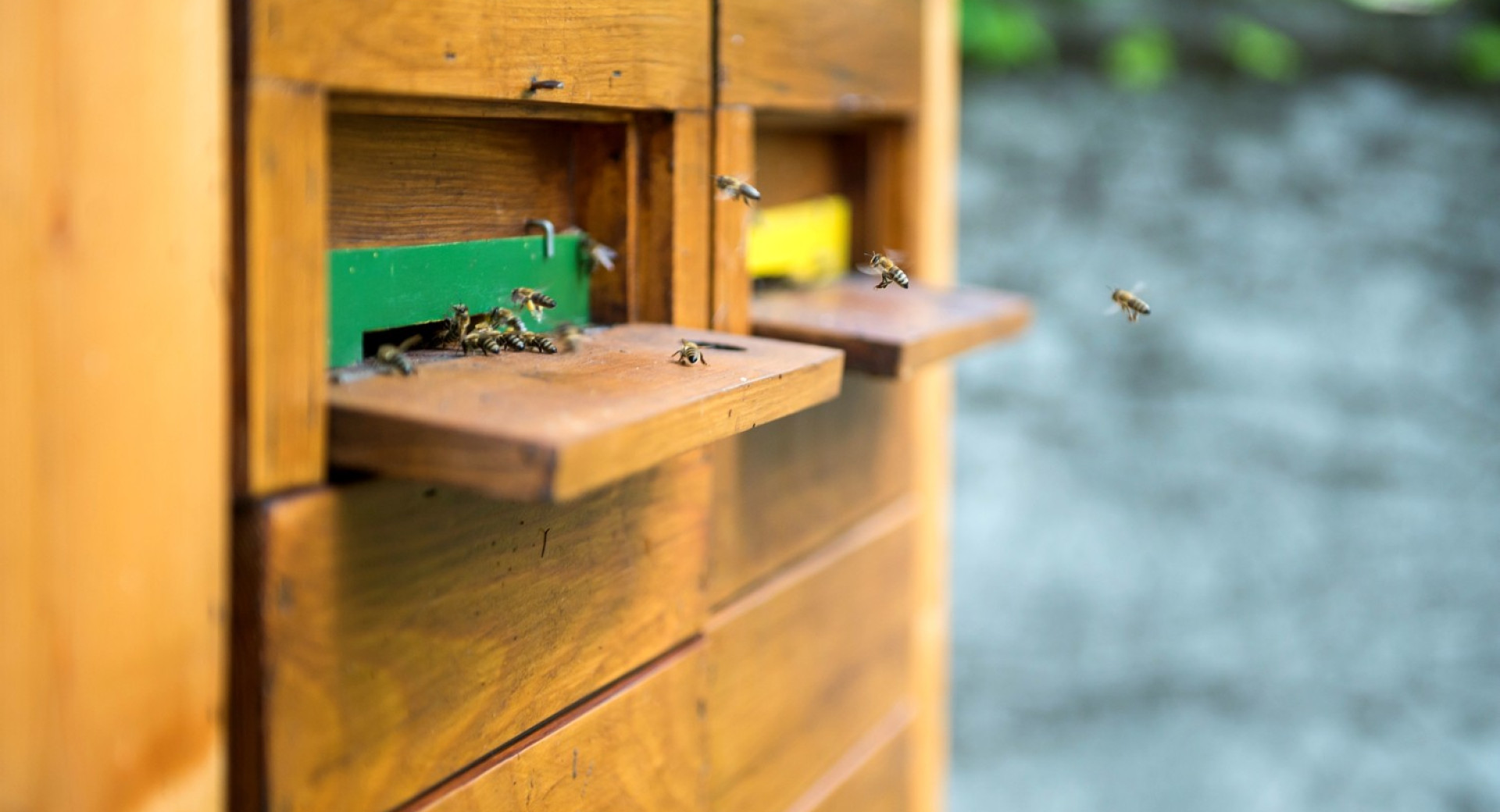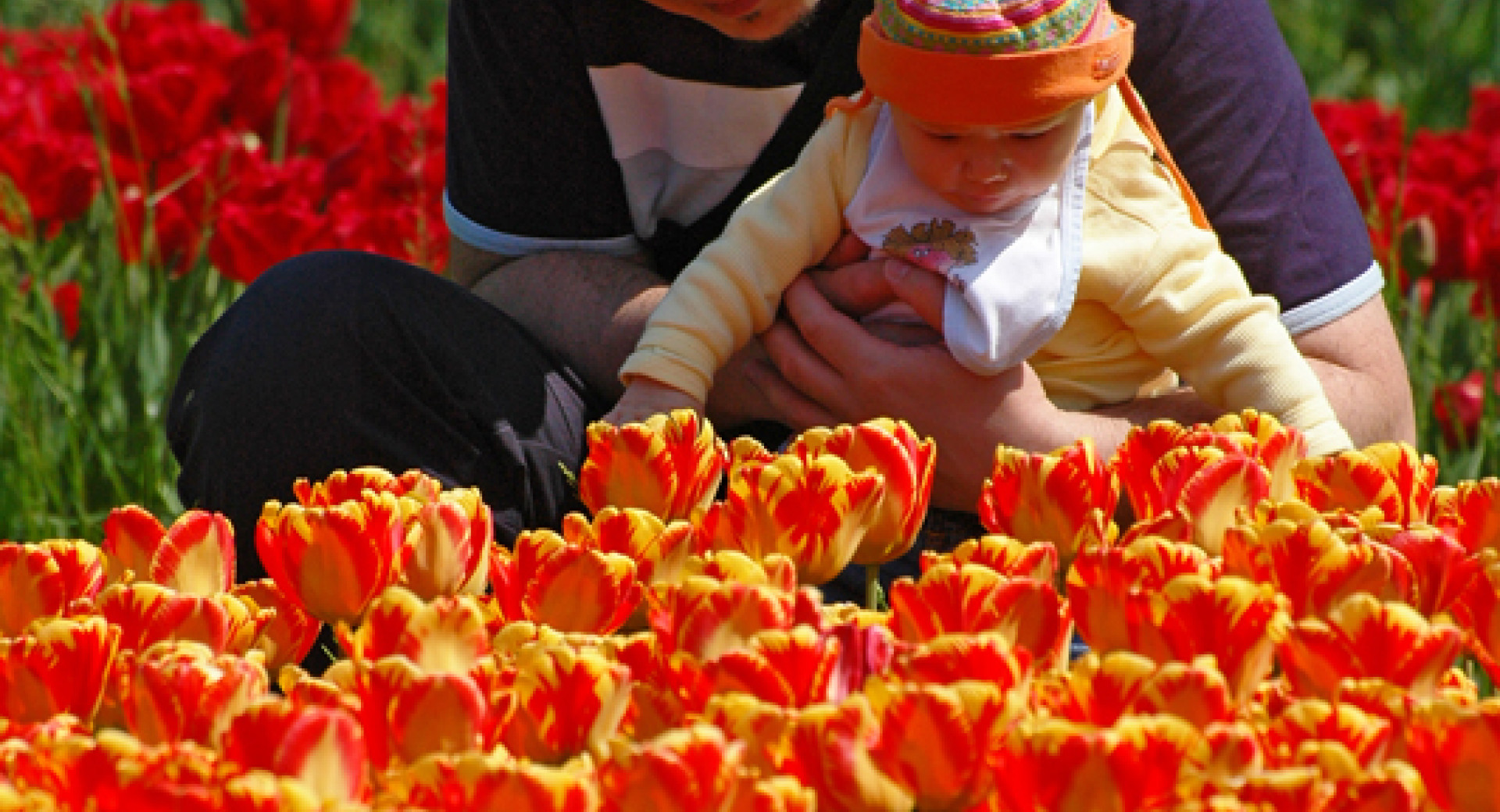Flora and Fauna around Ljubljana
Bees, birds, and buds: let’s look at what to do on a lovely day during your next Ljubljana holiday.

If you listen closely, wherever you are—even in Ljubljana—you’ll likely hear the thrumming of bees. Slovenia is bee-central, and a great place to spot birds and flowers of all sorts. Slovenia has the most beekeepers per capita in the world: with one beekeeper for every 100 citizens. It’s the place to be(e). Sorry, I couldn’t help myself. There may be puns ahead.
Slovenia is home to the indigenous Carniolan Gray honeybee (Apis mellifera carnica), prized for its gentle temperament, resilience, and excellent honey yields. In fact, it is the world's second most popular bee, exported globally and cherished by beekeepers worldwide. (In case you were curious—I know I was—the world’s most popular bee is indigenous to Italy and thrives in tropical climates). Chances are that if you’ve eaten honey in a non-tropical country, it may well have been produced by a Carniolan Gray.
Beekeeping has been an integral aspect of Slovenian culture and heritage for ages. The earliest written accounts of beekeeping in Slovenia trace back to the 16th century, and traditional beekeeping wisdom has been handed down through generations. Anton Janša (1734-1773), a Slovenian, is regarded as the pioneer of modern apiculture. He held the distinction of being the world's first beekeeping professor, chosen by Empress Maria Theresa to impart his knowledge in Vienna. The Habsburg empire that she oversaw was massive, stretching from Spain to the Netherlands to Serbia. This meant that Janša’s beekeeping techniques influenced all of Europe. And they kept on doing so even after his death, for the empress decreed that all teachers of beekeeping, (the formal word for which is apiculture), must use Jansa’s books on the subject. As a writer myself, I recognize the value of having your book become required reading throughout an empire. I’m clearly writing about wrong subject—and maybe living in the wrong century.
One of Jansa’s key advances was not killing the bees in order to collect honey. This may seem obvious today, but it was not so in the 17th century, when the destruction of a hive and its residents was considered necessary in order to harvest honey. We have a lot to thank Janša for. Bees especially.
Another advance was to design beehives in the form of stackable boxes—this is the most commonly used system today. It’s no wonder that World Bee Day, an international celebration of bees first proposed by Slovenia to the UN, falls on May 20—Janša’s birthday.
Slovenia is renowned for its distinctive traditional beehive architecture, referred to as "AŽ hives" or "AZ hives." 90% of all beekeepers in Slovenia use AZ hives, and many the world over. These were invented by Anton Žnideršič, a 19th century beekeeper. These upright beehives, constructed from wooden panels, showcase distinctively painted front panels that are often decorated with vibrant folk-art patterns. The paintings on the panels are great fun. They sometimes show world-turned-upside-down cartoonish scenes, for example with animals hunting hunters. Others show miracles, like Saint Florian, patron saint of firefighters, extinguishing a blaze, or the devil chasing dormice. Original 19th century painted beehive panels are collector’s items, and you can see them in museums.
Slovenian beekeeping has emerged as a significant component of its tourism sector—it has been featured in The New York Times, Atlas Obscura, and beyond. Travelers can explore beekeeping museums, honey festivals, and bee-themed attractions throughout the country. Additionally, tourists have the opportunity to visit beekeepers, gain insights into their practices, handle bees themselves, and taste a variety of honeys. And I know just the place to be to really get to know the subject…
Carniolan Bee House, foto: Branko Petauer
Carniolan Bee House (Hiša Kranjski Čebele)
While you can visit many an apiary that is open to tourists, the best place to learn about Slovenia’s beekeeping tradition, and to feel an integral part of it, is at the Carniolan Bee House, in the charming village of Višnja Gora (Wild Cherry Mountain—what a great name). The museum is gorgeously designed, sleek and modern, and presents this millennia-old tradition with an array of kid-friendly interactive exhibits. My favorite are the beehives made of glass. These allow you to study, from within millimeters, the bees’ activities. But even cooler—you can spend the night in hotel rooms that are part of the museum, and are designed like a wooden hive, in light-filled six-sided “pods.” It’s a super cool concept that makes what could be a half-day trip into an overnight experience. Be a part of your own Night at the Museum. (I promise that was my last pun).

Kingfisher, archive Kingfisher Spring
Kingfisher Spring (Vodomčev Gaj)
Moving from bees to birds, consider a visit to Vodomčev Gaj, Kingfisher Spring in English, a nature reserve just outside of the town of Grosuplje, which is just beyond the Ljubljana ring road. This reserve is a birdwatcher’s dream, with seven distinct habitats within its confines, featuring 50 types of trees and bushes, and home to some 16,000 birds. You can visit the reserve on your own, but weekends at 10am they run guided tours that last around 90 minutes. For inexperienced birdwatchers (like me), this is the better way to go, as the helpful guide will point out birds of interest that I, frankly, might not have noticed at all.
If you plan ahead and visit outside of the winter, you can also sign up for a workshop in which you can handle certain birds. Under the guidance of a licensed “bird ringer,” a scientist from Ljubljana’s Natural History Museum, guests can very gently handle some of the birds who have been tagged with lightweight metal rings around their leg, in order to monitor their behavior and vitality. This activity takes place twice a month, winter excluded, so see their website for details. It’s an activity I haven’t managed to do yet, but one that will bring me back to Kingfisher Spring, as it sounds like a unique opportunity.

Arboretum, foto: Dunja Wedam
Arboretum
And what brings all these birds and bees to Slovenia’s wilderness? Flora, of course. Who would have thought that a world-class botanical garden lies less than five minutes from the center of Kamnik, my adopted hometown? It’s just a 25-minute drive north of Ljubljana and is far more elaborate, and engaging for kids, than the national botanical gardens in Ljubljana (which is more of a center for study).
Arboretum at Wolf Creek (Arboretum Volcji Potok) was once the estate around a castle that no longer stands. It is expansive, divided into forests, curated exhibits (butterflies, orchids, cacti, tulips in season), ponds, English gardens, Neo-Classical style French gardens, a hedgerow maze and more. And if you have kids, this is the place to be. A large swath is dedicated to games and jungle gyms for kids, and there is a frequent exhibit of life-sized realistic dinosaur statues, many of which move.
Spanning 188 hectares and founded in 1952, Arboretum has grown into one of Europe's most diverse botanical gardens. Visitors are treated to a harmonious blend of meticulously landscaped gardens and untamed, natural beauty. The arboretum's extensive network of paths allows guests to explore themed gardens that showcase plants in various ecosystems, such as alpine rock gardens, water gardens, and medicinal herb gardens.
One of the arboretum's crown jewels is its collection of rhododendrons and azaleas. In late spring, the vibrant blooms create a riot of colors that paint the landscape in vivid hues. This seasonal spectacle attracts nature enthusiasts and photographers from all over the world. It also has an exhibition featuring countless tulips every April, as well as some major art exhibits—in the spring and summer of 2023, it is featuring dozens of monumental sculptures of colossal animals by Belgian artist William Sweetlove, putting Arboretum on the world map for contemporary art.
Arboretum Volčji Potok isn't just a haven for plants; it's also a sanctuary for wildlife. The grounds are home to numerous bird species, small mammals, and insects. All those inviting plants and tasty bugs make it ideal for birds, and therefore birdwatchers.
But did I mention the playgrounds? My daughters grew up thrilled to visit Arboretum, which is one of the best places you can go with young children when visiting Slovenia. Its kid-friendly play areas include a hedgerow maze with a climbable tower at its center, life-sized dinosaur statues, a pirate ship-shaped playground, in-ground trampolines, kid-accessible ziplines, jungle gyms galore, a life-size whale you can play in... And, for parents, there are various cafes and strategically located hammocks.
When the weather is fine and the birds, bees, and trees call to you during your Ljubljana holiday, now you’ll know where to go.
This blog is also available as a podcast, where you can enjoy listening to Noah's charming American accent.

